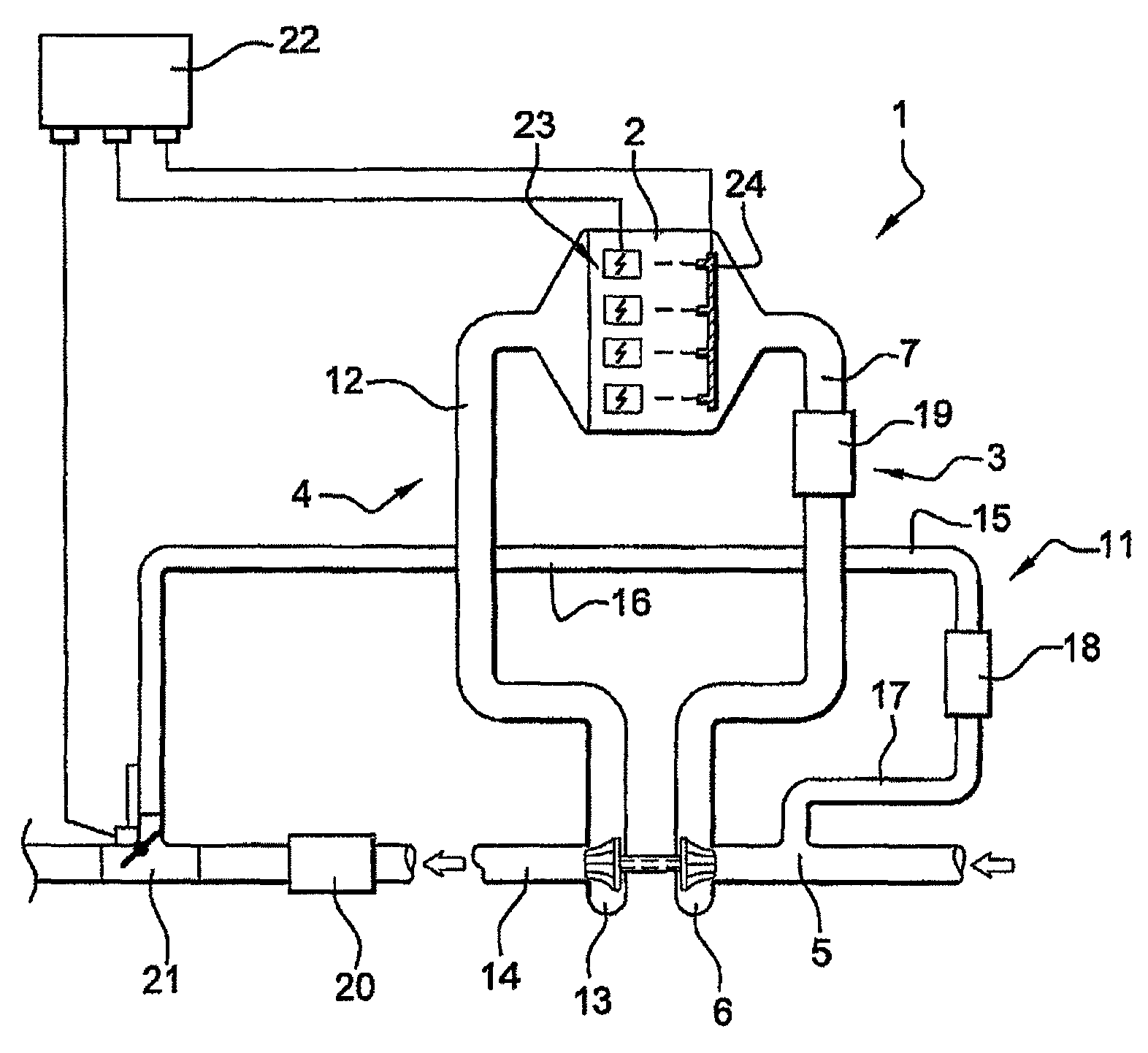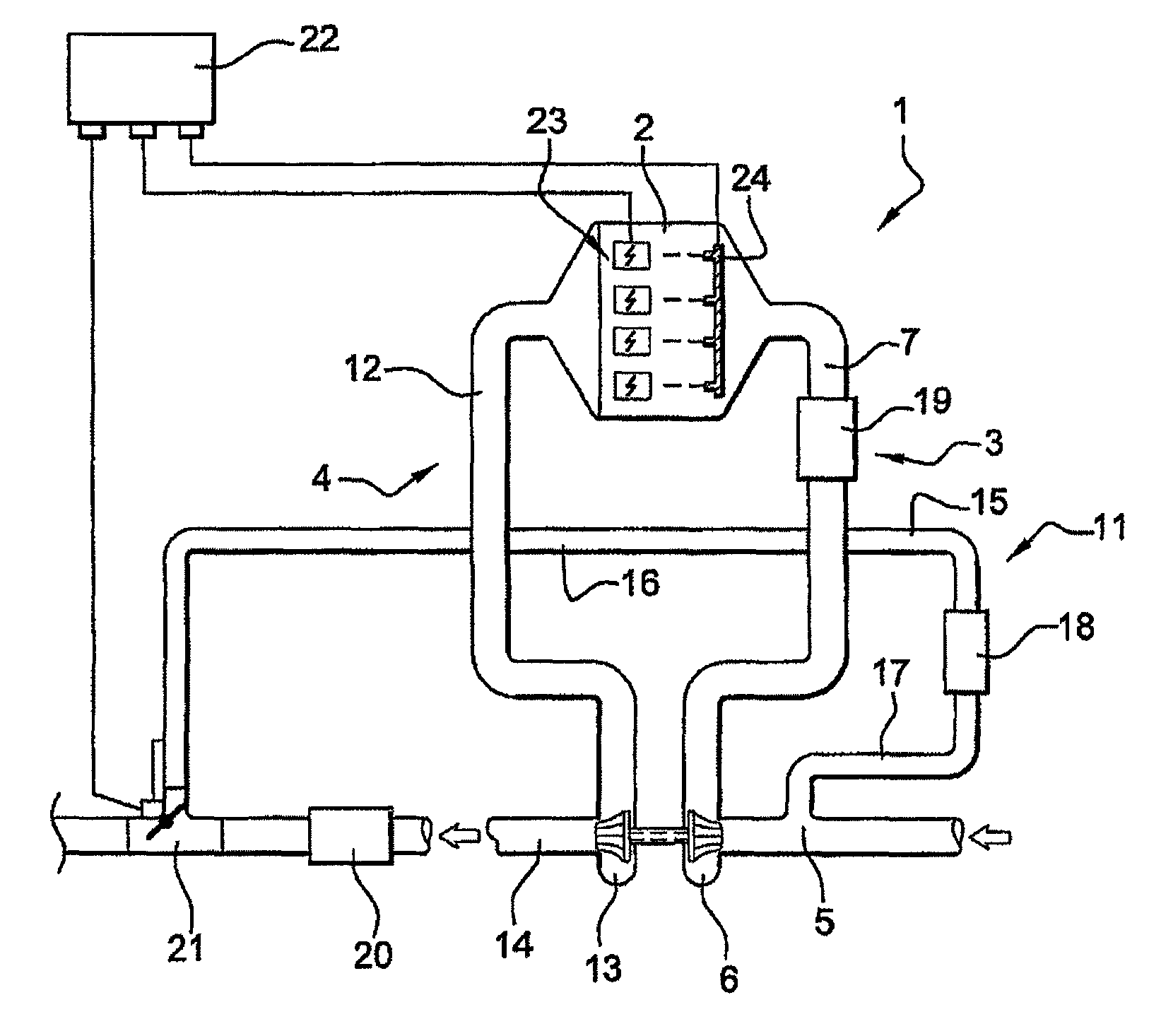Petrol engine having a low-pressure EGR circuit
a low-pressure egr circuit and engine technology, applied in the direction of position/direction control, non-fuel substance addition to fuel, exhaust gas recirculation, etc., can solve the problems of increasing the consumption of gasoline, affecting the combustion efficiency of the engine, and affecting the combustion efficiency of the air-gasoline mixture. , to achieve the effect of limiting the occurrence of knocking in the gasoline engin
- Summary
- Abstract
- Description
- Claims
- Application Information
AI Technical Summary
Benefits of technology
Problems solved by technology
Method used
Image
Examples
Embodiment Construction
[0014]With reference to the figure, the heat engine according to the invention, generally designated as 1, comprises an engine block 2 defining, in a manner known per se, combustion chambers provided with pistons rotating an output shaft of the engine. The combustion chambers of the engine block 2 are connected in a manner known per se to a supply system generally designated as 3 and to an exhaust system generally designated as 4.
[0015]The supply circuit 3 comprises an intake duct 5 leading into a compressor 6 connected to a supercharging air cooler itself connected via an intake manifold 7 to the combustion chambers of the engine block 2. The compressor 6 is in this instance a centrifugal compressor known per se comprising a bladed rotor 8 mounted so as to pivot about a shaft 9 in a housing 10. The intake duct 5 leads into the housing 10 coaxially with the rotation shaft 9.
[0016]The exhaust system 4 is known per se and comprises an exhaust manifold 12 connecting the combustion cham...
PUM
 Login to View More
Login to View More Abstract
Description
Claims
Application Information
 Login to View More
Login to View More - R&D
- Intellectual Property
- Life Sciences
- Materials
- Tech Scout
- Unparalleled Data Quality
- Higher Quality Content
- 60% Fewer Hallucinations
Browse by: Latest US Patents, China's latest patents, Technical Efficacy Thesaurus, Application Domain, Technology Topic, Popular Technical Reports.
© 2025 PatSnap. All rights reserved.Legal|Privacy policy|Modern Slavery Act Transparency Statement|Sitemap|About US| Contact US: help@patsnap.com


